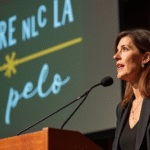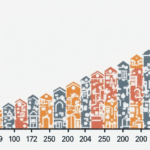Background on Brazil’s Internet Connectivity
Brazil, a vast country of 8.5 million square kilometers, had an internet penetration rate of approximately 71% in rural areas by 2020. In an effort to expand internet access, the Brazilian government entered the market by offering various spectrum licenses in bands such as 700 MHz, 2.3 GHz, 3.5 GHz, and 26 GHz. These licenses aimed to enable mobile operators to deploy 5G services, with the primary focus shifting from financial compensation to expanding coverage through various mechanisms for spectrum allocation.
Success of Brazil’s 5G Auction in 2021
The 2021 Brazilian 5G spectrum auction, which prioritized coverage over financial gains, has reportedly yielded positive results. Flávio Ferreira dos Santos, president of the Entity for Managing School Connectivity (EACE), announced during a telecommunications forum that 10,000 schools across all educational levels had been connected to the internet as of September 29, 2025. This includes 10,000 rural and quilombo schools, which are educational institutions in communities led by Afro-Brazilian descendants of escaped slaves.
Impact and Future Goals
Ferreira dos Santos highlighted that over 1 million students from remote communities are now being served through this initiative. The EACE aims to connect 18,000 rural schools by December 31, 2025. Since 2023, at least 100 schools have been connected daily, fulfilling the auction’s stipulations for 5G deployment.
With funds derived from the 5G auction commitments, EACE has also developed approximately 4,000 kilometers of optical fiber cable networks and around 1,200 voltage generation stations. However, the challenge remains in bridging the “use gap” rather than the “access gap,” as many rural schools still lack computing devices and students need guidance on utilizing the internet beyond studying.
Key Questions and Answers
- What is the main achievement of Brazil’s 5G auction? Over 1 million students in remote communities have been connected to the internet through the initiative.
- How many schools have been connected so far? 10,000 rural and quilombo schools have been connected as of September 29, 2025.
- What are the future goals of EACE? By December 31, 2025, EACE aims to connect 18,000 rural schools.
- What challenges remain in providing internet access to rural schools? The primary challenge is bridging the “use gap,” as many schools still lack computing devices, and students need guidance on utilizing the internet effectively.






